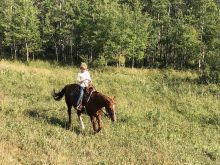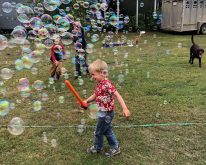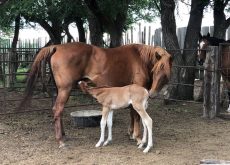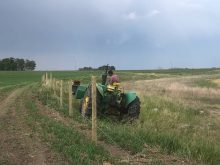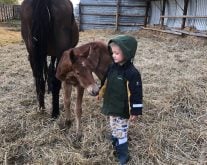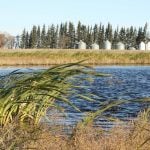The end of November and December was a time of fence building for us. We have a quarter section in Landis (about 32 km from our home place) that we have been using as a hayfield since we bought it because there is no water source and only the idea of a fence.
This year we got very few bales off it and left most of it standing to try to catch snow. With very little moisture this year we ended up grazing our pasture harder than we wanted and have ever done before. Without an early, warm and wet spring, it will be quite a while until we can turn cows out on it next year. And so, the hayfield is going to make a transition into a spring pasture.
Read Also
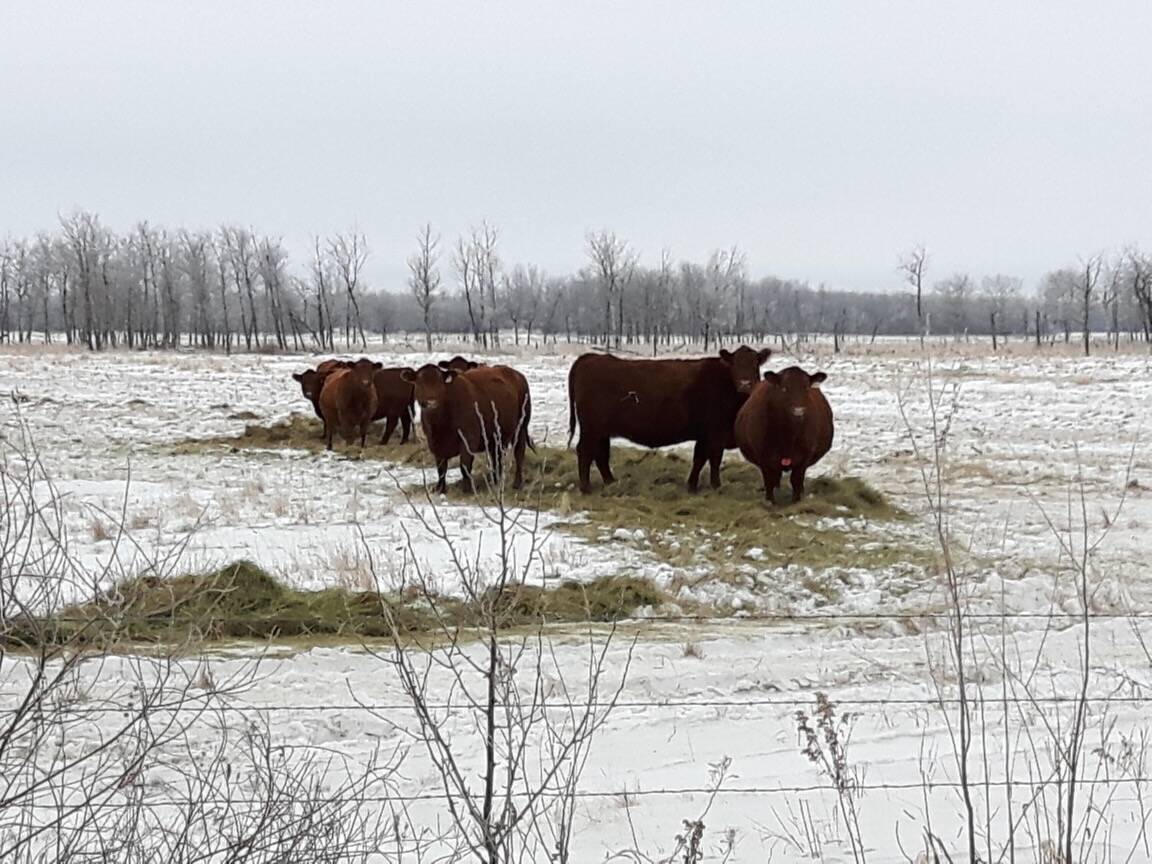
Prevent nitrate poisoning in overwintering beef cows
High-nitrate feeds can be deadly for overwintering beef cows. They can be used, but only if they’re processed and diluted in a lower nitrate ration.
We ended up boring a well on the native pasture to the northeast of the hayfield and we have plans to trench in a water line to a trough on hayfield to be a water source. This will have to be a spring project but the fence is something that can be worked on through the winter.
Posts get planted
November 25 we planned out the cross fence to split the hayfield from the grain quarter to the east. We pounded in the posts for the braces where we would turn to go around a slough here and there. The next day we worked on the posts in the new fence line. We never did have much trouble with the frost. From there we moved to the existing fence line along the west and south sides. Along the south side there were a few posts that were still good but the wire was pretty much useless due to the alkali sloughs. It was much slower going than the new fence line, in part due to the extra snow along the road ditch and also due to having to work around the old material.
The fence on the west side of the hayfield was a different story. The posts were almost all rotten off, while two of the wires were still very usable. The snow was still a challenge as it had blown off the neighbour’s field, but we had almost no trouble with frost.

We got all the posts pounded for the new pasture fence and decided to switch projects. On December 2 we started working on our corral fence. We have had plans for a few years to build a laneway around the back of the existing corral and a couple more pens to the south. This will make it easier to bring the cows into the corral and enable us to more easily sort them. It will also help to protect the trees that run north and south between the corral and the pasture.
Along the tree line we used the posthole auger on the JD 3020 to dig the holes for the railroad ties that will serve as coral posts. Under the trees there was no frost but the rocks and the roots were a bit of a challenge. Due to the trees, we were unable to use the post pounder and so we packed the dirt around the posts by hand.
When we started working on the two pens out in the open, the frost got to be more of a challenge. It was over a foot deep in places. The nice part was that we were able to use the post pounder to pound in the bigger ties and thus save some time as we didn’t really have to pack the dirt around the posts.
By December 10 we had the posts all in the ground and started hanging the gates and putting up one-inch sucker rod for rails. Our winter projects will take us some time to complete as we work around the weather, keep all the animals fed and bedded, and slow down a little bit to enjoy the Christmas season.
It’s necessary to stop and think about the important things in life and the many blessings that we have.
While the deadline for this column is before Christmas and it doesn’t appear until early in the New Year, here’s wishing that everyone had a Merry Christmas, and may God bless you and your family.





